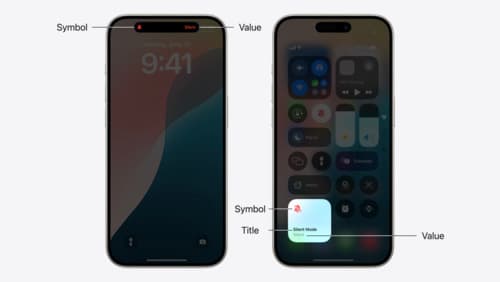what is changing with widget kit?
Asked on 2024-08-02
1 search
Changes in WidgetKit
Several updates and enhancements have been introduced to WidgetKit, as discussed in various sessions at WWDC 2024:
-
Interactive Widgets:
- Widgets can now have multiple interactive areas that perform actions and update state directly within the widget. This is supported across iOS, macOS, and now watchOS.
- Buttons and toggles can be added to widgets to perform actions without leaving the widget.
- Platforms State of the Union (50:50)
-
Accessory Widget Group Layout:
- A new layout called "Accessory Widget Group" allows for more information and interactivity. It supports up to three separate views and can deep link to different parts of your app.
- This layout is particularly useful for creating more glanceable and actionable widgets.
- What’s new in watchOS 11 (07:51)
-
Relevant Widgets:
- Widgets can now specify one or more relevant contexts (e.g., time of day, location, routine) to appear in the smart stack at the most useful times.
- This helps the system intelligently surface widgets when they are most needed.
- What’s new in watchOS 11 (05:01)
-
Controls in iOS 18:
- A new type of widget called "controls" has been introduced. These can extend app functionality into system spaces like Control Center, the lock screen, and the action button.
- Controls focus on actions and succinct information, making them ideal for quick access tasks.
- Extend your app’s controls across the system (00:07)
-
Enhanced Configuration:
- Widgets can now be more configurable. For example, a trail conditions widget can be configured for any trail, allowing users to add multiple instances of the widget for different trails.
- Bring your app’s core features to users with App Intents (17:51)
-
New View Template API:
- A new view template API called "Accessory Widget Group" has been introduced to create views in an accessory rectangular widget with up to three different pieces of content.
- This template enhances glanceability and interactivity.
- What’s new in watchOS 11 (07:51)
-
Text and Date Formats:
- New text formats for displaying live times and dates have been added, which work great in widgets and live activities.
- These formats include date references, date offsets, and timers, and are deeply customizable.
- What’s new in SwiftUI (11:37)
These updates make widgets more interactive, configurable, and contextually relevant, enhancing the overall user experience across Apple's ecosystem.

Extend your app’s controls across the system
Bring your app’s controls to Control Center, the Lock Screen, and beyond. Learn how you can use WidgetKit to extend your app’s controls to the system experience. We’ll cover how you can to build a control, tailor its appearance, and make it configurable.

Platforms State of the Union
Discover the newest advancements on Apple platforms.

What’s new in SwiftUI
Learn how you can use SwiftUI to build great apps for any Apple platform. Explore a fresh new look and feel for tabs and documents on iPadOS. Improve your window management with new windowing APIs, and gain more control over immersive spaces and volumes in your visionOS apps. We’ll also take you through other exciting refinements that help you make expressive charts, customize and layout text, and so much more.
